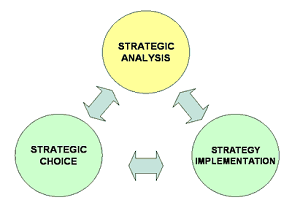Understanding concepts of strategy in business and war
| Subject: | 💼 Business |
| Type: | Analytical Essay |
| Pages: | 5 |
| Word count: | 1179 |
| Topics: | 📆 Business Plan, Marketing, 🧮 SWOT analysis, 🙋♂️ Management |

Need a custom
essay ASAP?
essay ASAP?
We’ll write your essay from scratch and per instructions: even better than this sample, 100% unique, and yours only.
Get essay on this topic
Sources
- Griffith, S. (2005). Book Review “The Art of War” by Sun Tzu. Center for Internet Marketing Research and Education. Retrieved September 1, 2006, from http://bizinfo.manila.ph/art-of-war/
- Strategy – what is strategy? (2006). Retrieved September 3, 2006, from http://www.tutor2u.net/business/strategy/what_is_strategy.htm
- Thornton, G. (2006). On War and Strategy. Catalyst Management Issues. Retrieved September 2, 2006, from http://www.grantthornton.ca/mgt_papers/MIP_template.asp?MIPID=29
- Thorpe, N. (2000). Origins of war: Mesolithic conflict in Europe. British Archaeology, Issue 52, April, 2000. Retrieved September 2, 2006, from http://www.britarch.ac.uk/BA/ba52/ba52feat.html
Related Samples
Subject:
⛩️ Culture
Pages/words: 3 pages/836 words
Subject:
📚 Philosophy
Pages/words: 7 pages/1802 words
Subject:
💼 Business
Pages/words: 5 pages/1420 words
Subject:
💼 Business
Pages/words: 3 pages/853 words
Subject:
💼 Business
Pages/words: 2 pages/679 words
Subject:
💰 Economics
Pages/words: 2 pages/529 words
Subject:
⛩️ Culture
Pages/words: 11 pages/2994 words
Subject:
⚗️ Science
Pages/words: 4 pages/1164 words
Subject:
💻 Technology
Pages/words: 7 pages/1854 words
Subject:
💼 Business
Pages/words: 4 pages/949 words
Subject:
🏥 Health Care
Pages/words: 13 pages/3739 words

Boost your grades with a new guide on A+ writing
Time to excel in writing!
The download will start within seconds.
Download Sample
This essay is publicly available.
Offered for reference purposes only.
Offered for reference purposes only.
By clicking Get this sample, you agree to our Terms & conditions & Privacy policy
Thank you!
The download will start shortly.



